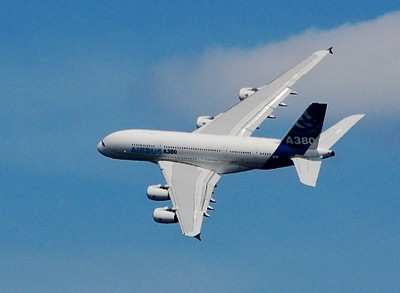Sat, Jan 21, 2012
Airplanes Which Have Completed Over 1300 Flights Are Covered By
The AD
EASA published an AD on Friday mandating a prompt detailed
visual inspection of the wings of 20 Airbus A380.

This inspection, which applies to aircraft that have already
completed more than 1300 flights, will have to be performed within
six weeks of 24 January 2012. Aircraft that have completed more
than 1800 flights will have to be inspected within four days of
this date.
EASA and Airbus are working closely together to ensure the
continuing safe operations of the A380 aircraft type. In accordance
with EASA, Airbus has established a repair scheme if cracks are
found during the inspection.
According to the AD (EASA AD No. 2012-0013):
Following an unscheduled internal
inspection of an A380 wing, some rib feet have been found with
cracks originating from the rib to skin panel attachment
holes (Type 1 cracks according to Airbus All Operator Telex (AOT)
terminology). Further to this finding, inspections were carried out
on a number of other
aeroplanes where further cracks have been found. During one of
those inspections, a new form of rib foot cracking originating from
the forward and aft edges of the vertical web of the rib feet has
been identified (Type 2 cracks according to Airbus AOT
terminology). The new form of cracking is more significant than the
original rib foot hole cracking. It has been determined that the
Type 2 cracks may develop on other aeroplanes after a period of
time in service.
This condition, if not detected
and corrected, could potentially affect the structural integrity of
the aeroplane.
For the reasons described above,
this AD requires a Detailed Visual Inspection (DVI) of certain wing
rib feet. This AD also requires reporting the inspection results to
Airbus.
This AD is considered to be an
interim action to immediately address this condition.
EASA continues to review the situation closely. As a result of
the on-going investigation, further mandatory actions may be
considered.
More News
Aero Linx: Model Aeronautical Association of Australia MAAA clubs are about fun flying, camaraderie and community. For over 75 years, the MAAA has been Australia’s largest fl>[...]
Touchdown Zone Lighting Two rows of transverse light bars located symmetrically about the runway centerline normally at 100 foot intervals. The basic system extends 3,000 feet alon>[...]
“Discovery and innovation are central to our mission at Virgin Galactic. We’re excited to build on our successful record of facilitating scientific experiments in subor>[...]
How To Get A Story On Aero-TV News/Feature Programming How do I submit a story idea or lead to Aero-TV? If you would like to submit a story idea or lead, please contact Jim Campbel>[...]
Student Pilot Reported That During Rotation, “All Of A Sudden The Back Of The Plane Kicked To The Right..." Analysis: The student pilot reported that during rotation, “>[...]
 ANN's Daily Aero-Linx (05.02.24)
ANN's Daily Aero-Linx (05.02.24) ANN's Daily Aero-Term (05.02.24): Touchdown Zone Lighting
ANN's Daily Aero-Term (05.02.24): Touchdown Zone Lighting Aero-News: Quote of the Day (05.02.24)
Aero-News: Quote of the Day (05.02.24) ANN FAQ: Contributing To Aero-TV
ANN FAQ: Contributing To Aero-TV NTSB Final Report: Cirrus Design Corp SR20
NTSB Final Report: Cirrus Design Corp SR20



